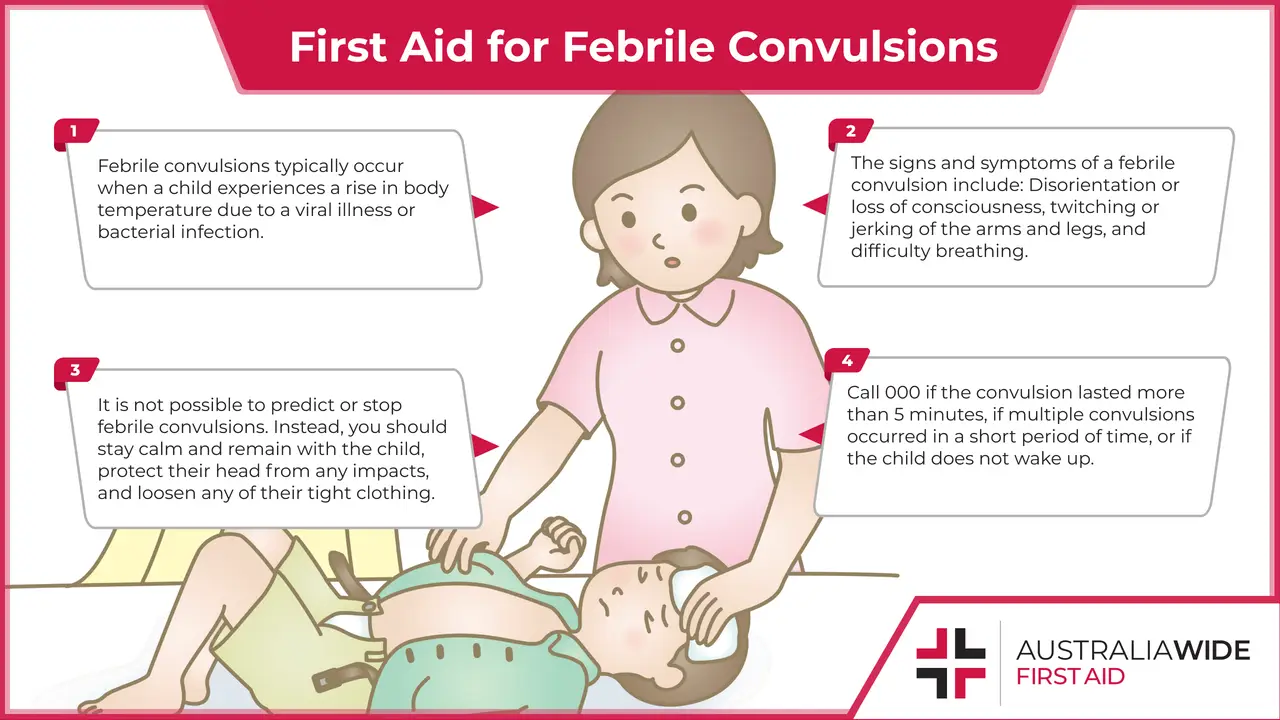First Aid for Febrile Convulsions


A febrile convulsion is a fit or seizure that can occur when a child experiences a fever, and their body temperature exceeds 38 degrees Celsius.
Febrile convulsions typically occur in children aged 6 months to 6 years, and they generally only last for a few minutes.
Though they are unlikely to cause long-term damage, it is important to know first aid for febrile convulsions, so that you can reduce your child’s discomfort.
Febrile convulsions typically occur when a child experiences a rise in body temperature due to a viral illness or bacterial infection.
A spike in body temperature can disrupt the functioning of neurons within the brain, thereby leading to involuntary muscle contractions and sudden, irregular movements of the body.
Children are more susceptible to febrile convulsions compared to adults, as their growing brains are more sensitive to fever.
If your child is exhibiting the following signs and symptoms, they may be experiencing a febrile convulsion:
It is important to remember, febrile convulsions are common among children, and they typically only result in a short period of drowsiness, rather than any long-term damage.
It is impossible to predict when a child will experience a febrile convulsion, and you cannot stop a febrile convulsion once it has started.
Instead, you should focus on ensuring that your child does not injure themselves while convulsing, using the following steps:
For more information on how to prevent, identify, and manage symptoms of a febrile convulsion, watch the video below and head to a first aid course near you:
We have a First Aid Chart that can be downloaded and printed in A2 size or smaller.
The following first aid courses look at febrile convulsions:

October 13, 2023
Choking occurs when an object or a piece of food becomes lodged in the throat, blocking the airway. The adult or child will have difficulty breathing, and may lose consciousness. Quick and effective action is essential to prevent severe consequences and death.

September 22, 2023
Knowing how to provide first aid for fluid draining from an ear is crucial to alleviate discomfort and potentially prevent complications.

July 31, 2023
This article covers treatment/first aid for nose bleeds, and also covers all of the common misconceptions and myths about treating a bleeding nose.